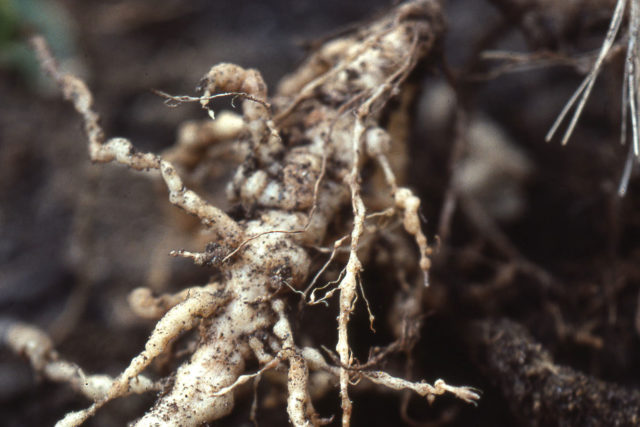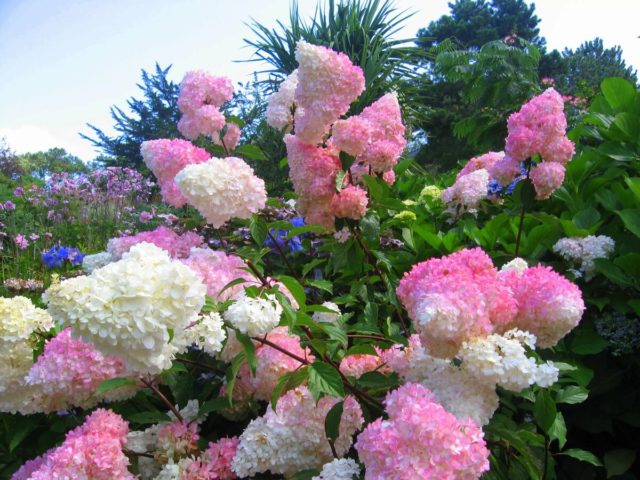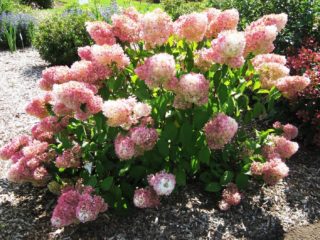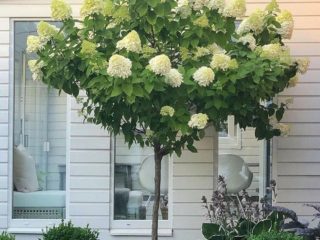Content
Blooming hydrangeas in the Leningrad region have long ceased to be a curiosity, despite the fact that in nature they grow in warm climates in the countries of Southeast Asia, South and North America. You can grow shrubs in harsh regions. During the relatively short warm summer, it manages to please others with its magnificent flowering.
Features of growing hydrangea in the Leningrad region
Heat-loving hydrangeas (lat. Hydrangea) have a number of features that allow even inexperienced gardeners to cope with growing plants in the Leningrad region:
- Hydrangeas do not have any special requirements for soil composition. They feel comfortable on peat soils that are not too rich in nutrients and are highly acidic. These types of soils are often found in the Leningrad region.
- Hydrangeas are resistant to pests and diseases.
- Breeders have developed many frost-resistant varieties that can winter in the Leningrad region without shelter. And for those varieties that do not tolerate cold so easily, simple insulation is enough. And even if the hydrangea bushes freeze a little, they are able to quickly recover with the onset of spring.
- Thanks to the variety of species and varieties, gardeners can form crowns in various ways, grow plants in flower beds and hedges, as tapeworms.
- Even in rainy, cool weather, typical of the Leningrad region, hydrangeas bloom for a long time and retain their decorative appearance.
Hydrangea varieties for the Leningrad region
Hydrangea varieties for the North-West are adapted to the climatic characteristics of the Leningrad region. Pay attention to tree-like and paniculate species.
Tree-like
Tree hydrangea has large spherical inflorescences, the size of which can be up to 20 cm in diameter. Shrubs grow 1.5 m in height. The following varieties are recommended for planting in the Leningrad region:
- Grandiflora (Grandiflora). This is an old variety, known since the mid-19th century. In nature, the shrub can be enormous in size, up to 10 m in height. When grown as an ornamental garden plant, it rarely exceeds 3.5 m. But several hundred light cream-colored inflorescences can appear on one bush. The advantages of the Grandiflora variety are resistance to frost and undemanding growth conditions.
- Annabelle (Annabelle) – spreading low variety.Capable of growing up to 5–6 m in diameter. With good care and fertilization, the inflorescences can be gigantic, up to 50 cm in size. The flowers have a snow-white hue.
paniculata
Hydrangea paniculata for the Leningrad region tolerates cold well. Its inflorescences have an oblong shape, and the color, depending on the variety, can be pink, cream, or red. The following varieties are suitable for the northwestern regions:
- Vanilla Fraze (Vanille Fraise) is a popular variety of hydrangeas, very spreading, with a crown of a regular symmetrical shape. Its distinctive feature is the change in color of the inflorescences from white at the beginning of the flowering period to pinkish and crimson in the autumn months.
- Limelayt (Limelight) is a shrub whose flowers have an original shade of lime. When they are in the shade they appear yellowish-green, but when exposed to sunlight they appear bright white. The variety is compact, up to 2 m high, with abundant flowering. The stems of Limelight hydrangea are so strong that they do not require tying to a support.
- Variety Pinky Winky (Pinky Winky) can overwinter without covering material, under a layer of mulch. Tall shrubs are covered with cone-shaped inflorescences in summer. At first they are completely painted white. In autumn, the lower flowers change color to deep purple.
When to plant hydrangea in the Leningrad region
Taking into account the climatic characteristics of the Leningrad region, plants are planted in open ground in the spring. As a rule, this procedure is carried out in mid or late March. By this time the soil has time to warm up. In addition, the likelihood of return frosts practically disappears.
Planting hydrangea bushes in the fall is a risky undertaking, since before winter the plant does not have time to take root and become strong enough to survive the early onset of frost.
Planting and caring for hydrangea in the Leningrad region
When planting hydrangeas, it is important to immediately select a suitable place for the normal growth and development of the plant, and also take into account the requirements for the composition of the soil. Otherwise, the bush may not take root on the site and die.
Selection and preparation of a landing site
In the Leningrad region, it is better to allocate hydrangeas to well-lit or slightly shaded areas of the garden. Plants need sufficient warmth and sunlight to bloom abundantly and vibrantly. In addition, such environmental factors reduce the risk of contracting fungal infections.

The area where hydrangea grows must be protected from cold winds and drafts
Optimal conditions for keeping:
- Exposure to sunlight in the morning and partial shade in the afternoon.
- Draft protection.
- Moist, acidic soil.
- The distance between hydrangeas growing in the neighborhood is 1–2 m.
Despite the fact that hydrangeas are moisture-loving, they cannot grow on swampy soils, of which there are many in the Leningrad region. Excess moisture in the soil leads to diseases and rotting of roots.
The soil for growing hydrangeas must contain sufficient nutrients. You can prepare the soil mixture yourself.To do this, you need to mix peat, sand, humus, and garden soil in a ratio of 1:1:2:2.
Manure should not be added to the soil; it can cause burns to the roots. The same applies to fertilizing with nitrogenous fertilizers.
To acidify the soil, you can prepare a solution of citric acid. To do this, you need to dilute 3 tbsp. l. in a bucket of water. Another method is mulching with pine needles.
How to plant hydrangea in the Leningrad region
The scheme for planting hydrangeas in the Leningrad region is as follows:
- Dig a hole 50 cm deep and wide.
- Place drainage in the form of broken bricks or crushed stone at the bottom.
- Fill the hole one-third full with soil mixture.
- Apply fertilizers: superphosphate (70 g), urea (25 g), potassium sulfate (30 g).
- Place the hydrangea seedling in the hole so that the root collar is not too deep.
- Sprinkle with soil mixture.
- Pour a bucket of water with a solution of citric acid.
- Mulch the tree trunk circle.
Watering and fertilizing
Hydrangea is watered twice a week, and in hot, dry weather - three times. Use warm, settled water. To ensure that the soil retains moisture, the tree trunk circles are loosened, weeded and mulched.

The crop should be watered at the root, without affecting the foliage and flowers.
Plants are fed several times per season:
- before the appearance of buds - with mineral and organic fertilizers;
- after the formation of buds - with superphosphate;
- in the first days of summer - nitrophoska;
- in September, before wintering - potassium sulfate and superphosphate.
Trimming
Hydrangeas are pruned to form a crown or for sanitary purposes. In the latter case, diseased, dried, damaged shoots are removed.Such procedures are carried out in spring and autumn, and, if necessary, in summer.
Shaping haircuts in the Leningrad region are usually planned for March or April. In paniculate hydrangeas, the tops of the shoots are shortened by 2-3 buds, in tree-like hydrangeas - by 4.
How to cover hydrangea for the winter in the Leningrad region
Despite the fact that hybrid varieties are frost-resistant, when growing a crop in the Leningrad region, it is better to cover it for the winter. Perform this procedure as follows:
- In autumn, hydrangea is pruned, leaves and flowers are removed.
- The ground around the hydrangea is cleared of fallen leaves.
- The soil is mulched.
- The shoots are collected together, bent to the surface of the earth, and fixed. You can put boards under them.
- First, covering material is placed on top, and then perforated polyethylene.
Reproduction
There are several ways to propagate hydrangeas, each of which can be used when growing plants in the Leningrad region:
- Dividing the bush. Conducted in the spring. Adult specimens are dug up and divided into fragments so that each has several renewal buds. The roots and shoots are slightly shortened, soaked in a growth stimulator and planted in new planting holes.
- Cuttings. Propagation material is prepared in the summer; in the Leningrad region this is usually done at the end of June. The upper parts of the shoots, about 15 cm long, are cut off. 2 pairs of upper leaves and buds are left on the cuttings. Treat in a growth stimulator for half an hour. Then they begin planting.
- Layerings. Hydrangea is propagated using this method with the onset of spring. The soil around the bush is dug up, several grooves 5 cm deep are made. Powerful side shoots are placed in them, fixed and sprinkled, then watered regularly.When young shoots appear, directed vertically, they are earthed up and transplanted in September.
Diseases and pests
Hydrangeas have strong immunity. Diseases can be associated with errors in maintenance and an incorrectly selected place for growing.
Disease | Causes | Signs | Treatment options |
Chlorosis | Iron deficiency or excess lime | Yellowing, drying of leaves | Fertilizing with iron sulfate, watering with a solution of citric acid to soften the soil. |
White rot | Fungal infection from neighboring plants | Darkening and rotting of shoots in the lower part, white coating on hydrangea foliage | Removing damaged areas, spraying with copper sulfate or preparations for white rot. |
Gray rot | Excess moisture | Gray plaque on leaf blades | Removal of damaged tissue, spraying with Bordeaux mixture, Fundazol. |
Powdery mildew | Insufficient watering, excessive application of nitrogen fertilizers | Yellow-green spots on the foliage, a grayish or purple coating on the underside of leaf blades | Pruning and burning of infected parts, treatment with fungicides. |
Ring spot | Distribution regardless of conditions of detention and care | Ring-shaped spots on hydrangea leaves | Destruction of the plant. |
The most dangerous pest for hydrangeas living in the Leningrad region is the root-knot nematode. These are worms that attack the root system. A sign of infection are reddish galls, similar to blisters, that appear at the base of the shoots and on the roots.

There are no effective ways to control root-knot nematodes
Slugs can pose a serious danger to hydrangeas, especially young ones. They eat leaves and tops of shoots. Insects and their eggs are collected by hand and destroyed.
Conclusion
In the Leningrad region, hydrangeas are increasingly becoming a decoration for garden plots. The main secrets in growing them are the correct selection of the variety and a suitable place for planting. With regular care and attention to the plant, it will delight you with lush, beautiful inflorescences for a long time.













